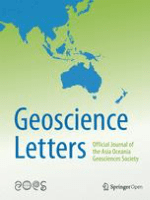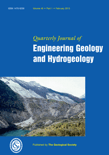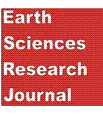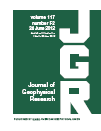
NATURAL HAZARDS AND EARTH SYSTEM SCIENCES
Scope & Guideline
Exploring the Interplay of Hazards and Earth Systems
Introduction
Aims and Scopes
- Natural Hazard Assessment and Management:
The journal emphasizes the assessment, modeling, and management of various natural hazards, including floods, landslides, tsunamis, and wildfires, using both empirical and computational methods. - Climate Change Impacts:
Research on the effects of climate change on natural hazards, such as increased flooding, droughts, and extreme weather events, is a core focus, highlighting the need for adaptive strategies and resilience planning. - Risk and Vulnerability Analysis:
The journal publishes studies that analyze the vulnerabilities of communities and ecosystems to natural hazards, exploring socio-economic impacts and the effectiveness of risk mitigation strategies. - Innovative Modeling Techniques:
Utilization of advanced modeling techniques, including machine learning, statistical methods, and remote sensing, to enhance the prediction and understanding of natural hazards. - Interdisciplinary Approaches:
The journal encourages interdisciplinary research that integrates insights from geology, meteorology, hydrology, and social sciences to address complex natural hazard scenarios.
Trending and Emerging
- Multi-Hazard and Compound Event Analysis:
A growing trend towards studying the interactions between multiple hazards and the cumulative impacts of compound events, emphasizing the interconnectedness of natural systems. - Citizen Science and Community Engagement:
Research involving citizen science initiatives and community engagement in disaster preparedness and response is emerging, showcasing the importance of local knowledge and participation. - Technological Innovations in Hazard Monitoring:
The use of innovative technologies, such as drones, remote sensing, and advanced data analytics, for monitoring and predicting natural hazards is increasingly highlighted. - Social Dimensions of Natural Hazards:
Emerging themes include the social aspects of natural hazards, such as public perception, risk communication, and the socio-economic implications of disaster recovery. - Climate Change Adaptation Strategies:
The journal is increasingly publishing studies focused on adaptation strategies to mitigate the impacts of climate change on natural hazards, underscoring the urgency of this global challenge.
Declining or Waning
- Historical Natural Hazard Events:
Research focusing on historical natural hazard events and their impacts has seen a decrease, possibly as the field shifts towards real-time data and predictive modeling for future events. - Single-Hazard Studies:
There is a noticeable decline in studies that concentrate solely on single hazards, as the emphasis on multi-hazard assessments and interactions between different hazards grows. - Static Risk Assessment Models:
Traditional static models for assessing risk have become less prevalent, with researchers favoring dynamic, adaptive frameworks that account for changing conditions and uncertainties.
Similar Journals

Journal of Geology Geography and Geoecology
Empowering Scholars to Shape Our Environmental Future.The Journal of Geology Geography and Geoecology, published by OLES GONCHAR DNIPRO NATIONAL UNIVERSITY, is a premier open-access platform dedicated to advancing the fields of geology, geography, and geoecology. With its ISSN 2617-2909 and E-ISSN 2617-2119, this journal seeks to disseminate high-quality research, fostering collaboration and innovation among researchers, professionals, and students alike. The journal embraces a diverse range of topics, from earth sciences and ecological studies to geographical methodologies, providing a comprehensive perspective on how these disciplines interconnect. It aims to support impactful scholarly communication, thereby addressing some of the most pressing environmental challenges of our time. Authors and readers will find a committed editorial team that values rigorous peer-review processes and encourages the rapid sharing of scientific knowledge, all while maintaining a commitment to open access principles. This makes the Journal of Geology Geography and Geoecology an essential resource for anyone invested in understanding the complex dynamics of our planet.

Geoenvironmental Disasters
Transforming research into actionable disaster management.Geoenvironmental Disasters, published by SPRINGERNATURE, is a leading open-access journal dedicated to advancing the interdisciplinary fields of environmental science, geography, and geotechnical engineering. Since its inception in 2014, the journal has made significant strides in disseminating high-quality research that addresses the challenges posed by geoenvironmental hazards and their impacts on society. With an impressive Q1 ranking across multiple categories, including Environmental Science (miscellaneous) and Geography, Planning and Development, it occupies a vital niche within the academic community. The journal’s rigorous peer-review process ensures that only the most insightful contributions are made available to a global audience. Researchers, professionals, and students are encouraged to engage with the content, which covers a wide range of topics, including disaster management, risk assessment, and stakeholder engagement in policy-making. This commitment to open-access accessibility since 2014 further enhances its reach and impact, providing a critical platform for advancing knowledge and innovation in managing geoenvironmental disasters.

Geoscience Letters
Exploring the Depths of Earth and BeyondGeoscience Letters, published by Springer, is a prominent open-access journal in the field of Earth and Planetary Sciences, recognized for its dedication to advancing knowledge and research in this vital area of study. With a reported impact factor that reflects its esteemed position—ranking in the Q1 quartile of Earth and Planetary Sciences, particularly as the journal ranks #48 out of 195 in the general category according to Scopus—the journal serves as a vital resource for researchers, professionals, and students. Since its inception in 2014, Geoscience Letters has facilitated the dissemination of high-quality research and critical insights, aiming to bridge the gap between scientific discovery and societal needs. Its commitment to open access ensures that the latest findings are readily available to a global audience, thus enhancing collaboration and innovation within the geosciences community.

Quarterly Journal of Engineering Geology and Hydrogeology
Connecting Researchers and Professionals in Earth Sciences.The Quarterly Journal of Engineering Geology and Hydrogeology, published by GEOLOGICAL SOC PUBL HOUSE, stands as a crucial resource in the realms of Earth and Planetary Sciences, Geology, and Geotechnical Engineering. With an ISSN of 1470-9236 and its E-ISSN 2041-4803, this esteemed journal has been committed to disseminating high-quality research from its inception in 2001 through to 2024. Although it operates under traditional subscription access, the journal remains dedicated to providing a platform for rigorous scientific discourse and knowledge exchange. In 2023, it was recognized with a Q3 category rank across multiple disciplines, reflecting its growing influence and solid standing; it ranks #105 out of 321 in Earth and Planetary Sciences: Geology, and #97 out of 229 in Geotechnical Engineering and Engineering Geology. The journal aims to bridge the gap between theoretical research and practical applications, making it an invaluable tool for researchers, professionals, and students eager to advance their knowledge in the interrelated fields of engineering geology and hydrogeology.

PHYSICS AND CHEMISTRY OF THE EARTH
Innovating Research in Geophysics and PetrologyThe Physics and Chemistry of the Earth is a premier interdisciplinary journal published by Pergamon-Elsevier Science Ltd, dedicated to advancing the understanding of Earth sciences through the integration of geophysical and geochemical perspectives. With an ISSN of 1474-7065 and an E-ISSN of 1873-5193, the journal serves as a critical platform for researchers and professionals to disseminate key findings and innovative methodologies in the realms of geophysics and petrology. As of 2023, it proudly holds a Q2 ranking in both Geochemistry and Petrology and Geophysics, reflecting its robust impact in the scientific community, with Scopus rankings that position it in the top 20% and 32% of its respective categories. Notably, the journal is available in an open-access format, allowing for greater dissemination and accessibility of research contributions. With a publication history spanning from 1992 to 2024, Physics and Chemistry of the Earth stands as a vital resource for ongoing research and discovery in the Earth sciences, making it an essential read for academics and practitioners alike.

Earth Sciences Research Journal
Connecting Global Experts in Earth SciencesThe Earth Sciences Research Journal, published by the UNIV NACIONAL DE COLOMBIA, serves as a pivotal platform for the dissemination of knowledge in the diverse field of Earth and Planetary Sciences since its inception. With an ISSN of 1794-6190 and an E-ISSN of 2339-3459, this Open Access journal has been committed to providing unrestricted access to high-quality research since 2004. Located in Bogotá, Colombia, it has gained recognition within the academic community, achieving a Q3 quartile ranking in Earth and Planetary Sciences and notable Scopus rankings, which further underscores its relevance and reach. Its scope encompasses varied research topics, making it an essential resource for researchers, professionals, and students alike, seeking to contribute to or stay informed on the latest developments in the Earth sciences up to the year 2024. The journal not only anticipates cutting-edge research but also emphasizes collaborative dialogues among global experts, driving forward the conversation on critical issues facing our planet.

Geofizika
Connecting Researchers to the Core of GeophysicsGeofizika, an esteemed journal published by the Andrija Mohorovičić Geophysical Institute at the University of Zagreb, presents a significant platform for research in the fields of geophysics and Earth sciences. With an Open Access model established since 1984, this journal ensures that scientific knowledge is accessible to a broad audience, encouraging collaborations and the free exchange of ideas. Geofizika has steadily evolved through its converging years from 1989 to 1999 and has been active from 2003 to the present, reflecting its commitment to advancing geophysical research. The journal has been recognized for its contributions to Earth and Planetary Sciences and has acquired respectable ranks in various categories; notably, it holds a Q4 status in Geophysics as of 2023. Researchers, professionals, and students will find Geofizika a valuable resource for the latest discoveries and methodologies in geophysics, supporting the academic community in expanding the frontiers of knowledge in these vital scientific domains.

Natural Hazards Review
Transforming Research into Actionable StrategiesNatural Hazards Review, published by the ASCE-Amerc Soc Civil Engineers, is a prominent journal dedicated to advancing the understanding of the impacts of natural hazards on civil infrastructure, the environment, and societal dynamics. With a focus on interdisciplinary approaches, this journal plays a vital role in the fields of Civil and Structural Engineering, Environmental Science, and Social Sciences, evidenced by its Q2 rankings across multiple categories in 2023. Throughout its publication history since 2000, the journal has emerged as a key resource for researchers, practitioners, and students, providing innovative insights and fostering critical discussions regarding disaster risk reduction, resilience strategies, and sustainable practices. Although it does not currently offer open access options, authors and readers alike can benefit from its robust contributions as it continues to shape the discourse on mitigating the effects of natural hazards. By disseminating high-quality research, Natural Hazards Review is instrumental in promoting a comprehensive understanding of this pressing global issue.

JOURNAL OF GEOPHYSICAL RESEARCH-EARTH SURFACE
Connecting Disciplines to Decode Earth’s Surface.JOURNAL OF GEOPHYSICAL RESEARCH-EARTH SURFACE, published by the American Geophysical Union, stands as a leading voice in the fields of Earth-Surface Processes and Geophysics. With an impressive impact factor placing it in the Q1 category for both disciplines, this journal offers invaluable insights and research findings that address critical challenges related to Earth's surface dynamics and processes. Since its inception in 2004, the journal has been dedicated to fostering a deeper understanding and interdisciplinary exploration of topics critical to environmental science, geology, and geophysics. Researchers and professionals in the field will find cutting-edge studies meticulously peer-reviewed to ensure high quality and relevance, making it an essential resource for academics, practitioners, and students alike. The journal's significant Scopus rankings — 25th out of 179 in Earth-Surface Processes and 26th out of 165 in Geophysics — underscore its influence and the rigor of its content, encouraging submission and engagement from leading scholars globally.

Open Geosciences
Empowering Science Through Open Access.Open Geosciences, published by DE GRUYTER POLAND SP Z O O, is a prominent open access journal that has been serving the scientific community since its inception in 2015. With an ISSN of 2391-5447, this journal focuses on the dynamic fields of Earth and Planetary Sciences as well as Environmental Science, securing a commendable Q2 ranking in both categories as of 2023. Situated in Germany, Open Geosciences is committed to disseminating high-quality research and facilitating innovative discussions surrounding geosciences. The journal embraces a diverse range of topics, aiming to foster collaboration among researchers, professionals, and students worldwide. As an open access publication, it enhances visibility and accessibility of its articles, allowing for greater engagement within the global scientific community. This is further substantiated by its respectable Scopus rankings—77th out of 195 in General Earth and Planetary Sciences and 97th out of 219 in Environmental Science—which underscore its significance in advancing geoscientific knowledge. Whether you are a researcher looking to publish your findings or a student seeking valuable insights, Open Geosciences stands out as a crucial resource in the exploration of our planet and its environment.